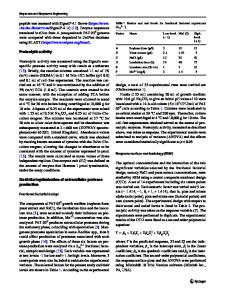Effect of SrTiO 3 modification on dielectric, phase transition and piezoelectric properties of lead-free Bi 0.5 Na 0.5 T
- PDF / 2,284,448 Bytes
- 8 Pages / 595.276 x 790.866 pts Page_size
- 67 Downloads / 348 Views
ORIGINAL ARTICLE
Effect of SrTiO3 modification on dielectric, phase transition and piezoelectric properties of lead‑free Bi0.5Na0.5TiO3‒CaTiO3‒SrTiO3 piezoelectric ceramics Hoang Thien Khoi Nguyen1 · Trang An Duong1 · Farrukh Erkinov1 · Hyungwon Kang2 · Byeong Woo Kim3 · Chang Won Ahn4 · Hyoung‑Su Han1 · Jae‑Shin Lee1 Received: 6 February 2020 / Revised: 16 April 2020 / Accepted: 17 April 2020 © The Korean Ceramic Society 2020
Abstract This study investigated the structures, dielectric, ferroelectric and piezoeletric properties of lead-free (0.99‒x) Bi0.5Na0.5TiO3‒0.01CaTiO3‒xSrTiO3 (BNT‒CT‒100xST, x = 0.22–0.30) piezoelectric ceramics. These piezoceramics were successfully prepared using the conventional solid-state reaction method sintered at 1175 °C for 2 h. It was found that a phase transition from nonergodic relaxor to ergodic relaxor was induced by ST modification in BNT‒CT ceramics. Con∗ sequently, a large electromechanical strain of 0.20% corresponding to high normalized strain d33 of 667 pm/V was obtained even under 3 kV/mm for BNT‒CT‒28ST ceramics. Therefore, it is noted that lead-free BNT‒CT‒100xST ceramics can be promising candidates for actuator applications. Keywords Piezoelectric properties · Dielectric properties · Lead-free · Relaxor · Ternary system
1 Introduction Piezoelectric materials have attracted a great deal of attention for electronic devices, such as actuators, transducers and sensors, etc. The most widely used piezoelectric material are P bTiO3‒PbZrO3 (PZT)-based component systems [1]. However, volatilization of toxic PbO during high temperature sintering not only causes environmental pollution, but also generates instability of composition and electrical properties of the final products. It is recently desired to use lead-free materials for environmental protection; and in many countries (European Union, Japan, Korea, etc.), the * Hyoung‑Su Han [email protected] 1
School of Materials Science and Engineering, University of Ulsan, Ulsan, Republic of Korea
2
Electronic Convergence Materials and Device Research Center, Korea Electronic Technology Institute, Seongnam‑si, Republic of Korea
3
Department of Electrical Engineering, University of Ulsan, Ulsan, Republic of Korea
4
Department of Physics and EHSRC, University of Ulsan, Ulsan, Republic of Korea
governments have encouraged the industry to remove lead from electric and electronic equipment [2–5]. Accordingly, lead-free piezoelectric materials concerned with ceramics based on (K0.5Na0.5) NbO3 (KNN) and Bi1/2Na1/2TiO3 (BNT) have been widely attracting attention to replace PZT ceramics [6–10]. Especially, Bi-based lead-free piezoceramics such as Bi1/2Na1/2TiO3‒BaTiO3 (BNT‒BT) or B i1/2Na1/2TiO3‒ Bi1/2K1/2TiO3 (BNKT) materials have been considered as potential candidates for actuator applications because of their excellent electromechanical strain properties. Those bismuth-based materials possess a reversible phase transition between an ergodic ralaxor state and a ferroelectric with the application of elec
Data Loading...











